Tracking is a skill we will all need at some point in our hunting lives; Mark Ripley provides tracking tips and advice to ensure you can follow up a wounded animal, should the unfortunate situation arise
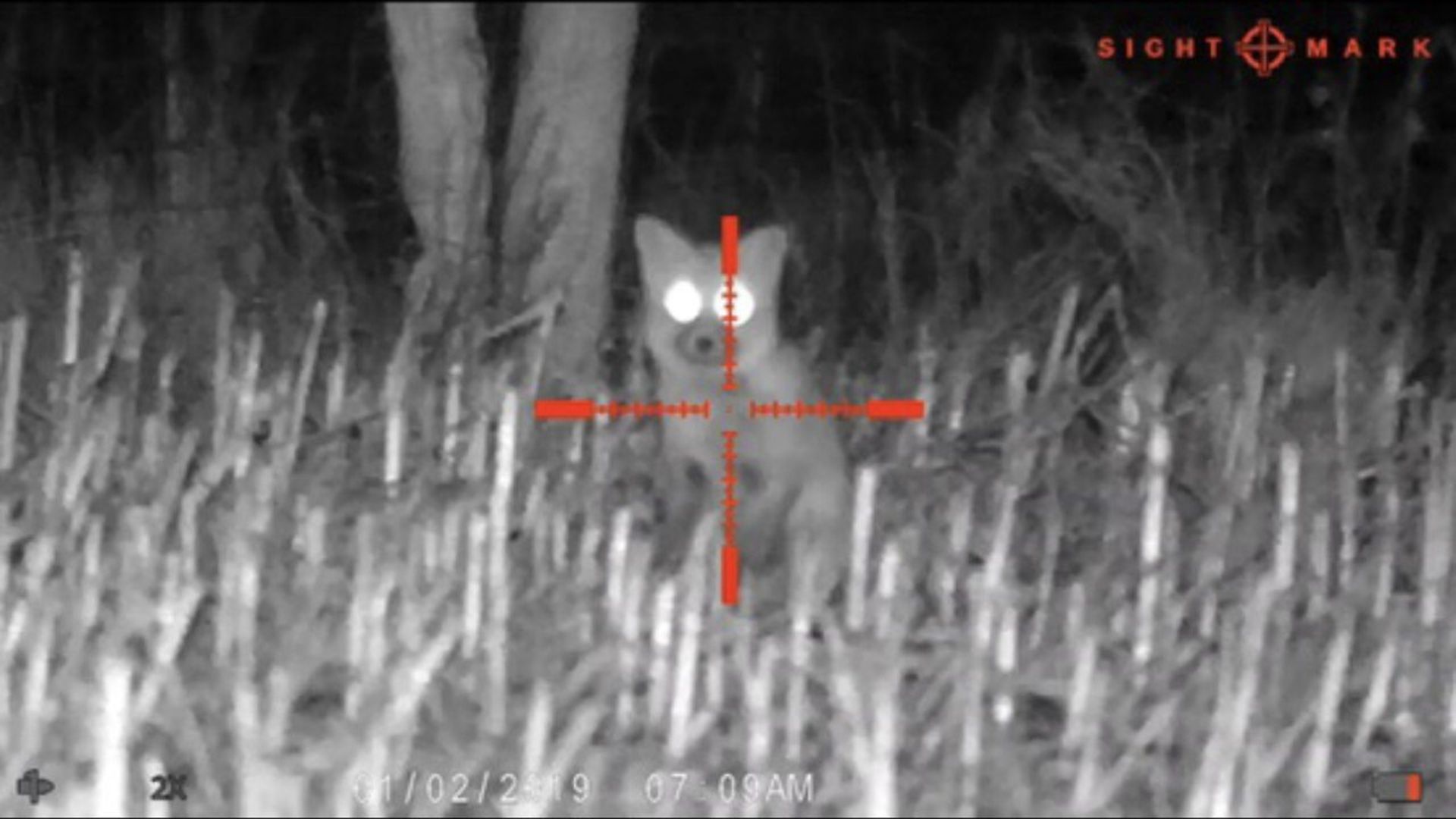 credit: Archant
credit: Archant
I watched as the last of the sun’s glow disappeared behind the wood, feeling the temperature quickly drop as the fields turned into dark shadows. Two roe in the distance peacefully fed along the hedgerow, no longer visible to the eye but as clear as day through the thermal. However, although I was keen to see what sort of deer numbers were in the area, I was after foxes.
From my vantage point I had a good view over several fields and before long I spotted a fox around 400 yards behind me working back and forth across the freshly cut maize field. I decided it was worth a walk out to it to see if I could get a shot, so I began to take the rifle out of the tripod and fold the legs up.
As I did I glanced around with the thermal and spotted fox running off across the field and into the hedge. I’d obviously spooked it when I moved, probably just as it had come out no more than 100 yards from me! Never mind, one for another night, and the other was still out in the field.
After a quiet walk I managed to work my way around the edge of the same field and make my way down the slope to where the fox was currently out of sight in a slight dip. As I closed in on it I saw it appear from my right, working its way along the edge of the wood heading left.
I lined up on it, hit record on the nightscope, and at around 120 yards away gave it a little squeak to stop it. It slowed to a stop to stare at me and I squeezed the trigger. There was the solid thump of a decent hit and the fox displayed the characteristic hunched dash forward with its tail held up in the air – a sure sign of a hit. It dashed left and out of sight below the dip in the field and I was confident I’d find it within yards of where I’d shot it.
Through habit I left the tripod standing where I took the shot and made a mental note of which tree the fox had been standing in front of when I shot it. I also was able to play back the video on the Wraith scope and could see the fox was indeed clearly hit and had run left, but on walking down the field I could find nothing anywhere around that corner of the field.
I reasoned it must have made it the 50 yards or so to the nearby hedge, but a walk along it with the thermal revealed nothing. After a long search I had to give up looking to go and collect my daughter from work and decided to come back and look the following morning.
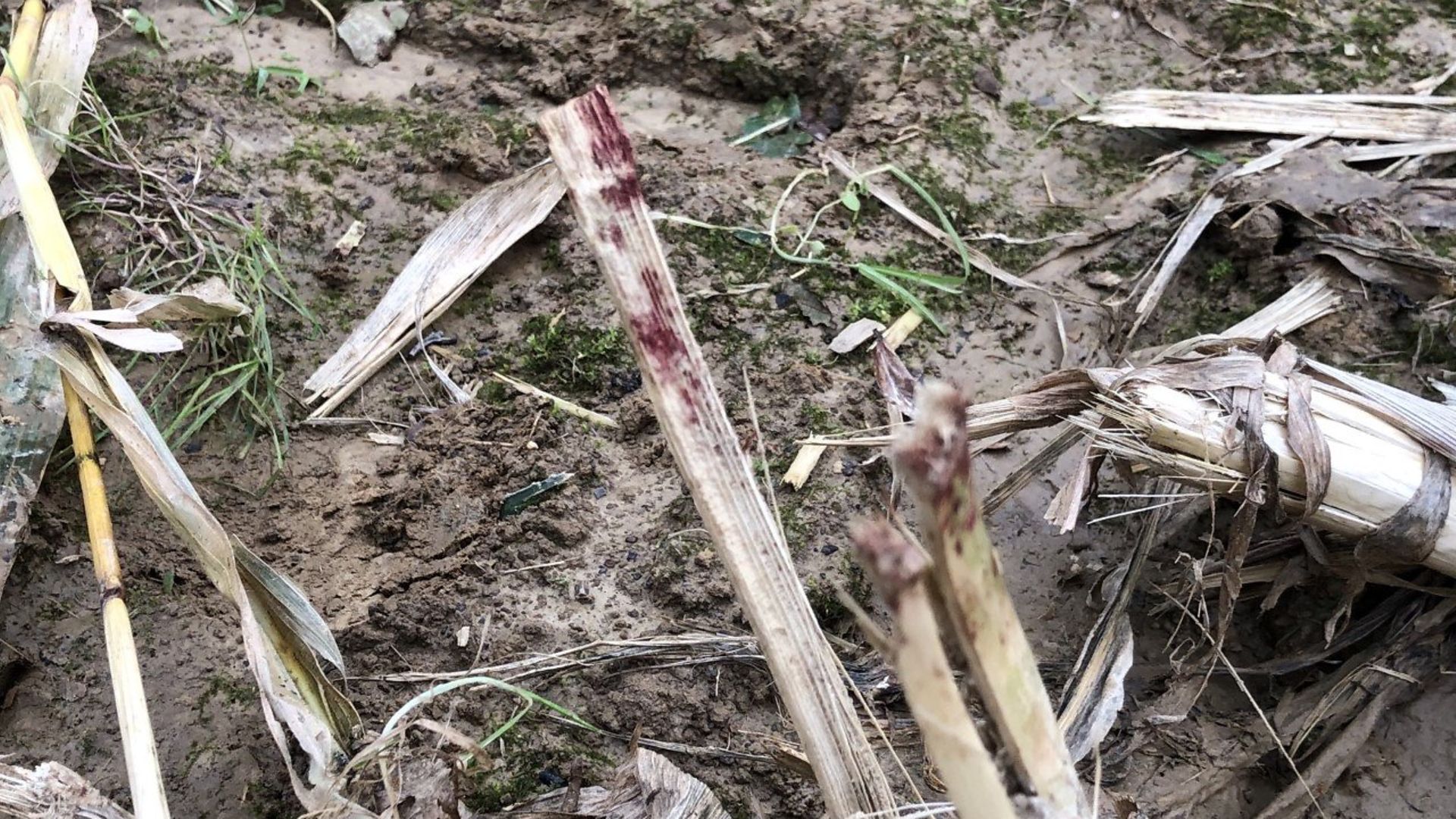 credit: Archant
credit: Archant
Tracking using blood trails
No matter how hard we try to make the perfect shot, every once and in a while you will find yourself in this position, be it a fox or a deer. Obviously we want to ensure the animal doesn’t suffer but we also want, in the case of a deer, to find it for the meat.
As far as foxes go, I still like to find them to be sure they are not laid out in the field suffering or for a member of the public to find, which does nothing to help the image of shooting. So returning the next morning I went straight to the area where I knew I’d shot the fox and began to search for signs of blood.
I had stuck a stick in the ground where I’d taken the shot from, so from the tree close to where the fox had been standing I worked my way back towards the firing point searching for blood. I’d thought the fox had been on the edge of the field but in fact it had been about 10 yards into the field, where I found some blood spatters, as well as flecks of fox fur.
The blood was bright red, indicating a heart or close to the heart shot, along with some small bone fragments. Had the blood been pinker and frothy or bubbly it would indicate a lung shot, whereas thick, dark blood would point towards a liver or kidney shot. In the case of a deer these signs would be the same, and any greenish particles in the blood and a pungent smell would confirm a gut shot.
It’s important to try and ascertain where the shot struck the animal to get an idea of how far it might have travelled. Following only fairly small signs of blood on the maize stubble (some of which may have faded in the light rain the previous evening) I found the fox had in fact circled to the right out of sight in the slight dip in the field.
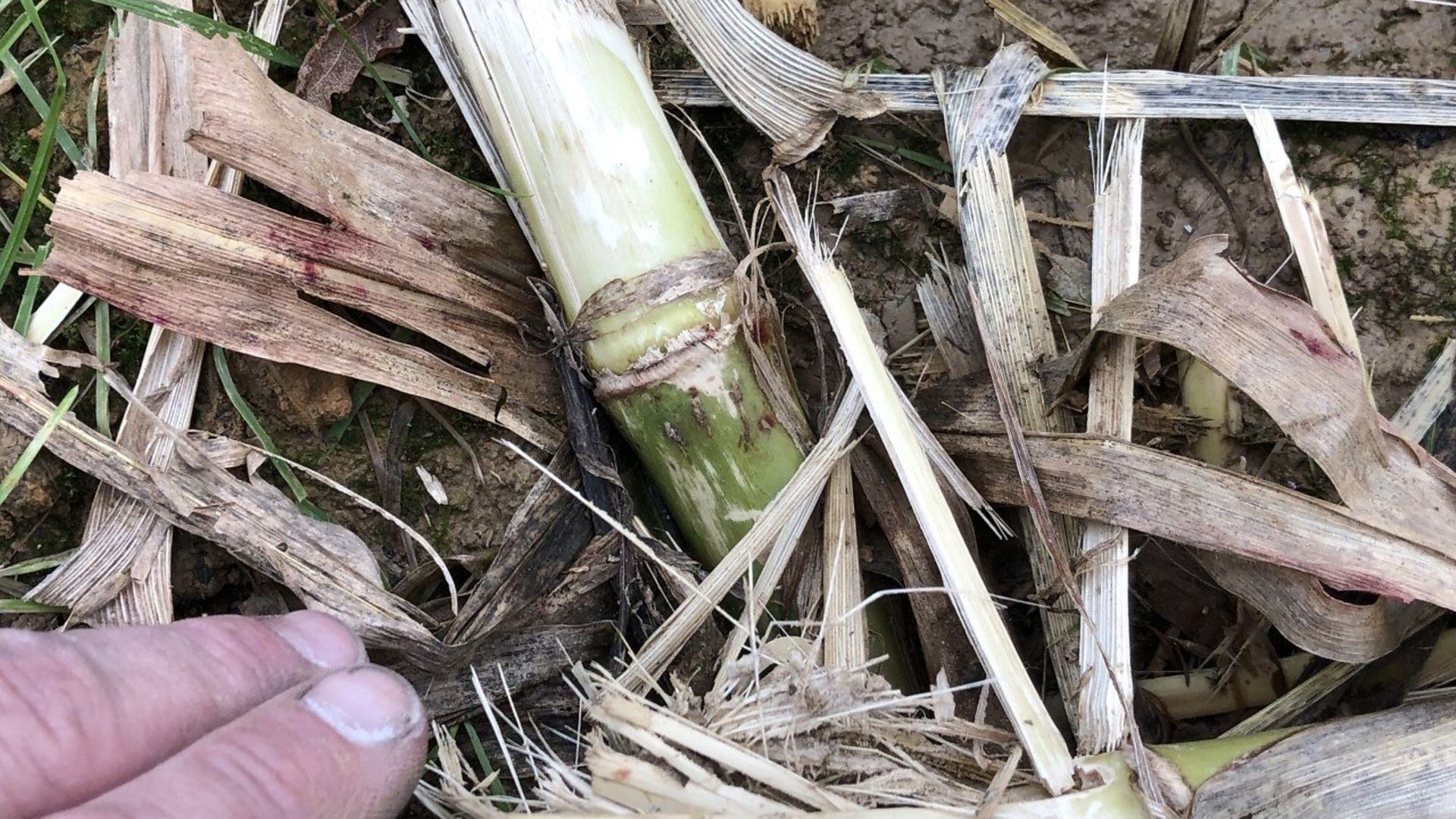 credit: Archant
credit: Archant
Track in outward circles and mark your finds
Every few yards I’d lose the trail, despite being practically on my hands and knees. Each time I did I would go back to the last sign of blood, then work in increasing circles around it until I found another trace. Another tip is to place markers where you find signs so that you can clearly see the direction of travel and easily retrace your steps to pick up the trail again.
Often shot game will go back in the direction they came from, or make for the closest cover in a blind panic. They will also generally take the easiest route through cover, which may help you find signs.
From the scuff marks in the mud and blood spatters on the stubble on one side, I could see the bullet had gone in and out of the animal and it was losing blood on both sides. On one side – the exit side – the blood was in lots of spatters about 6" off the ground, which indicated an arterial bleed, but on the other side there was just the occasional drop.
It’s also worth noting that when a drop of blood hits the ground from a running animal, the leg of the splash points in the direction of travel. Should you see steady round blood droplets on the ground it would usually imply the animal was walking or, if it’s a bloodied foot print, it’s likely to be a brisket or leg strike and the blood is running down the leg.
Following the blood trail across the field, I soon found the fox around 40 yards on, obscured by a patch of stubble. Surprisingly, the small vixen had about a 4" exit wound through the chest, so I was amazed that it had gone anywhere. It just goes to show what tough animals they can be. Sometimes you won’t initially pick up a blood trail from the impact sight, as it can take a moment for the chest cavity of an animal to fill with blood before it begins to leak out, so if you’re confident of a hit be sure to cover a good radius from where the animal was stood to find the first sign of a blood trail.
With a large amount of blood on a trail you can be sure your quarry won’t be far away, but don’t rule that out even with a light blood trail as sometimes a hunk of fat or bone can quickly plug a bullet hole. Although the animal maybe dead on its feet it might not leave much of a trail.
It’s good practice when you shoot an animal and it runs – even when you see it drop and you know it’s dead – to find the shot site and follow the signs to the animal so that you get some practice reading the trail, which will help you recognise the signs when you need to actually track an animal.
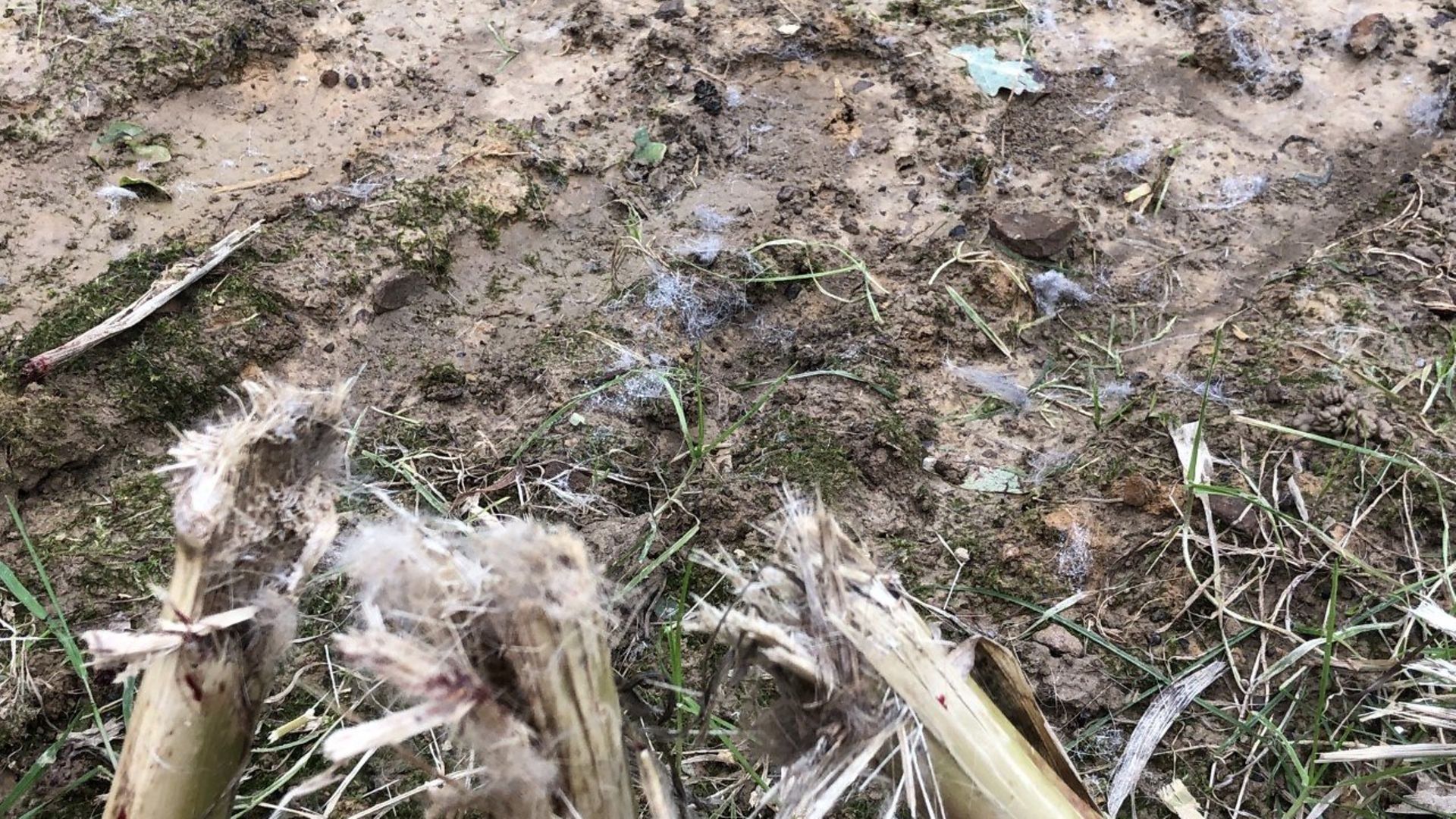 credit: Archant
credit: Archant
Tips and tricks for tracking wounded animals
There are a few tricks to finding shot quarry that might help when the need arises. Always carry some ribbon or a bit of toilet roll with you that you can use to mark a blood trail or other relevant points.
Try to make a habit of picking out a landmark of where the animal was standing when you shot it and leave a marker of where you were standing as a reference. Try to think like your quarry and imagine which way it might have run, as well as remembering what you saw at the time of the shot and the sound of the impact.
Search for blood, fragments or fur to establish a trail from where the animal was shot. Try to ascertain where the animal has been struck from signs on the ground and its reaction to the shot. When you find a sign, work in increasing circles to find the next sign, leaving markers as you go. Try to get low to the ground to see the signs better. If you lose the trail, go back to your last marker and work in increasing circles again until you pick up the trail and be careful not to trample on any small signs when searching.
You can see from this experience with a fox how easy it can be to lose a shot animal – even on a stubble field. Yet with a little tracking skill and awareness of where both you and the animal were positioned, it’s possible to find it quickly – in this case in the exact opposite direction to which I thought it had gone!
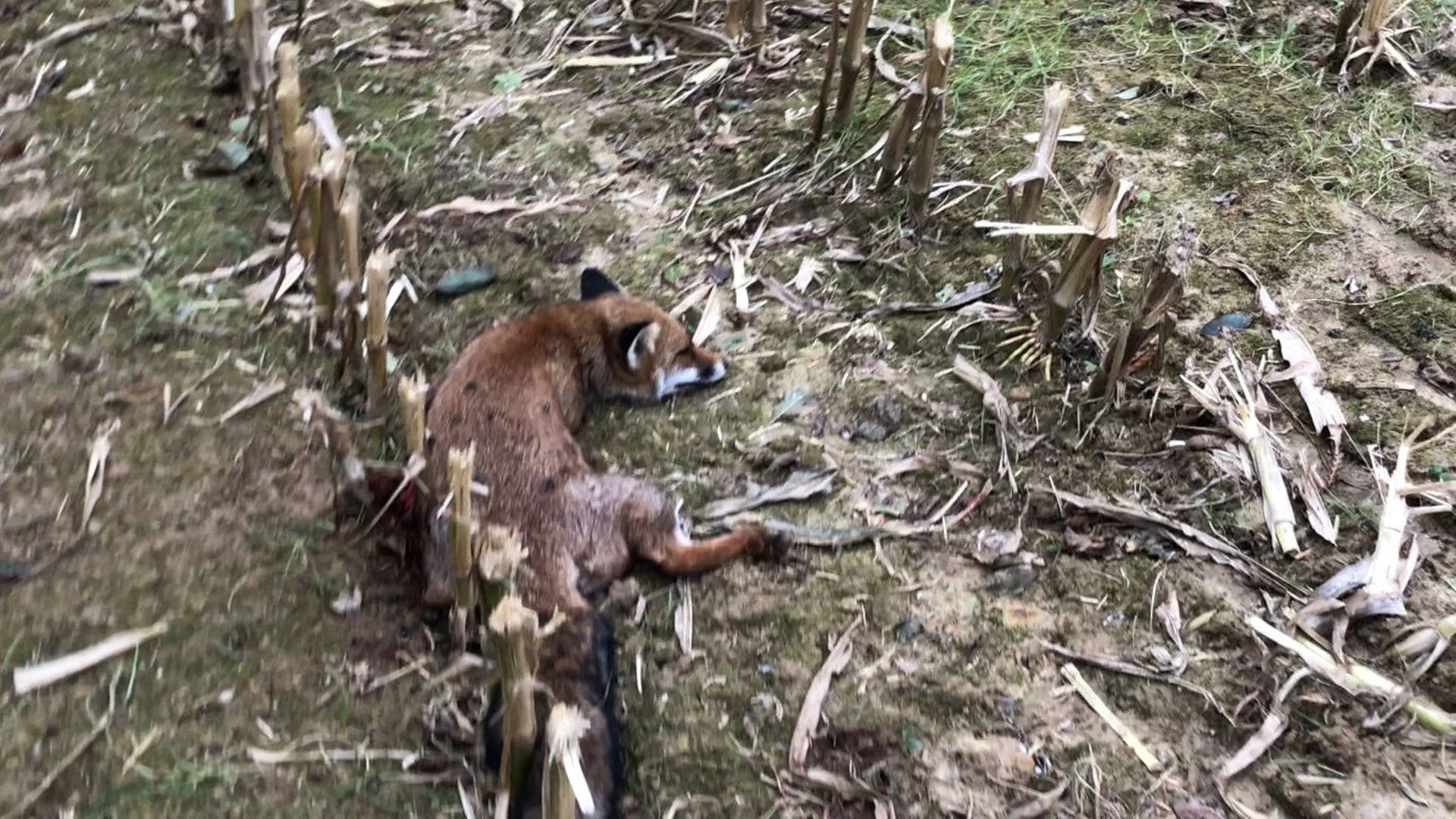 credit: Archant
credit: Archant